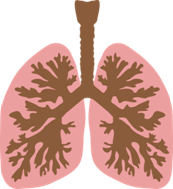Archives
The Four Stages of COPD
 It is estimated that 174 million people suffer from chronic obstructive pulmonary disease (COPD) and 3 million will die from it each year. Depending on how far it has progressed, COPD can be divided into four stages, ranging from Stage 1 (very mild) to Stage 4 (extremely severe).
It is estimated that 174 million people suffer from chronic obstructive pulmonary disease (COPD) and 3 million will die from it each year. Depending on how far it has progressed, COPD can be divided into four stages, ranging from Stage 1 (very mild) to Stage 4 (extremely severe).
These classifications are based on the Global Initiative for Chronic Obstructive Lung Disease, or GOLD, system, which is a program started by the National Heart, Lung, and Blood Institute and World Health Organization. GOLD grades COPD based on the results of a spirometry test, which measures the strength and speed each time a person exhales, combined with subjective measures of symptom severity.
Your doctor will look at two specific numbers from the spirometry test: 1) FVC, or force vital capacity, which is the total amount of air you breathe out, and 2) FEV1, or force expiration volume in one second, which is the amount you can breathe out in one second. A FEV/FVC ratio of less than 0.7 indicates COPD. Symptom severity is typically determined using either the British Medical Research Council (mMRC) questionnaire or the COPD Assessment Test (CAT).
It is the combination of these findings that determines the stage of COPD. Each stage has a unique set of symptoms and treatments, as outline below.
Stage 1: Symptoms are so mild that most people see no difference in their lung function. Your doctor may recommend a bronchodilator medication to open your airways. Lifestyle changes will also be encouraged, such as quitting smoking — the top cause of COPD — and avoiding secondhand smoke.
Stage 2: Symptoms worsen to the point where people typically seek medical attention. Coughing and mucus production become more severe, and you may experience shortness of breath when exercising or walking. Doctors will typically recommend pulmonary rehabilitation during this stage to learn how to better manage your COPD. Steroids and oxygen are also often prescribed to mitigate dangerous flare-ups.
Stage 3: Symptoms are so severe that patients may not be able to do simple chores and often can’t leave the house. Flare-ups will become more frequent. Shortness of breath and coughing will worsen. Additional symptoms in this stage include frequent colds, swollen ankles, and wheezing. Most patients will be prescribed an oxygen tank to assist with their breathing.
Stage 4: Oxygen blood levels are very low, and the risk of developing heart and lung failure is very high. Flare-ups are more frequent and can sometimes be fatal. Treatment includes surgical intervention such as a lung transplant or a bullectomy, where large areas of damaged air sacs in the lungs are removed.
Added Insights from Dr. Nair: Everyone’s disease trajectory will be unique, so don’t allow yourself to get pigeonholed into any particular category or defined by any number. The bottom line is to lead the best life you can, regardless of stage.
Read the complete story on Healthline to learn more about the stages of COPD.




